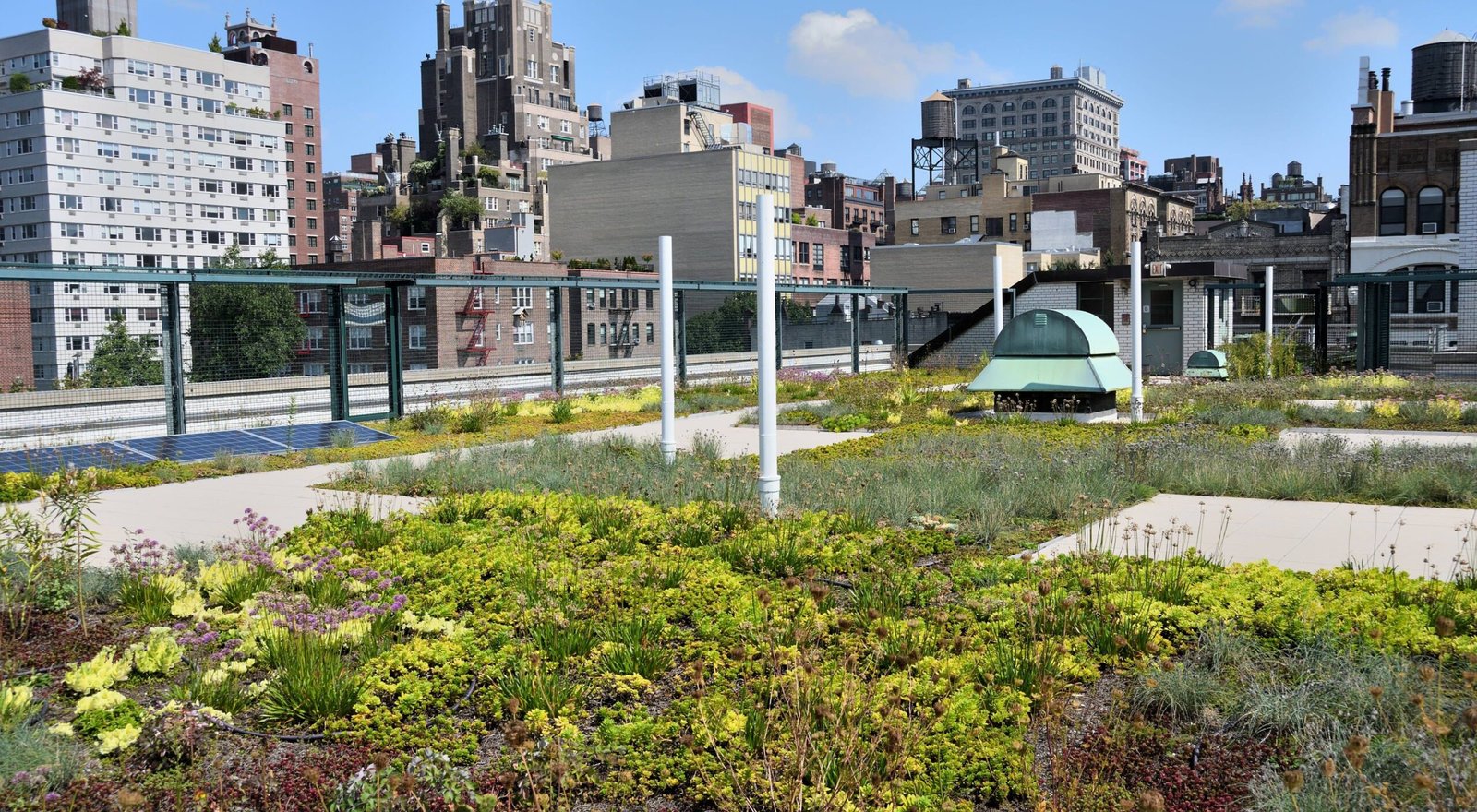According to recent research, green roofs treated with mycorrhizal fungi foster a more diverse soil community that is more likely to support long-term green roof sustainability.
About Green Roofs:
- Green roofs, also known as ‘vegetated roofs’ or ‘living roofs’ — are ballasted roofs consisting of a waterproofing membrane, growing medium (soil), and vegetation (plants) overlying a traditional roof.
- The layers of green roof systems must, like any roof, accommodate drainage, and stormwater management, and protect the building from the elements with a waterproof membrane.
- But they also must create a growing area and potentially provide support, irrigation, and root protection barriers while staying as light as possible.
- Two types of green roofs exist: intensive and extensive.
- Intensive green roofs are essentially elevated parks. They can sustain shrubs, trees, walkways and benches with their complex structural support, irrigation, drainage, and root protection layers.
- Extensive green roofs are relatively light. They support hearty native ground cover that requires little maintenance. Extensive green roofs usually exist solely for their environmental benefits and don’t function as accessible rooftop gardens.
- Benefits:
- Green roofs last longer than conventional roofs, reduce energy costswith natural insulation, create peaceful retreats for people and animals, and absorb stormwater, potentially lessening the need for complex and expensive drainage systems.
- On a wider scale, green roofs improve air quality and help reduce the Urban Heat Island Effect, a condition in which city and suburban developments absorb and trap heat.




